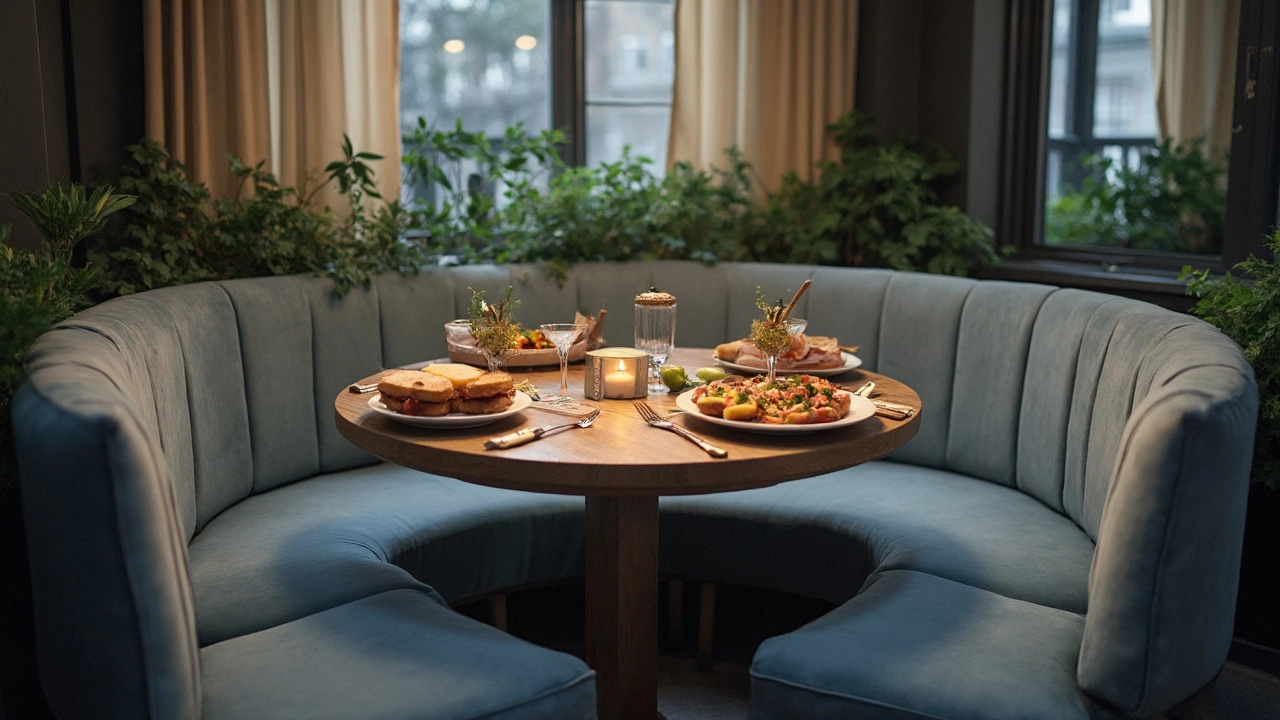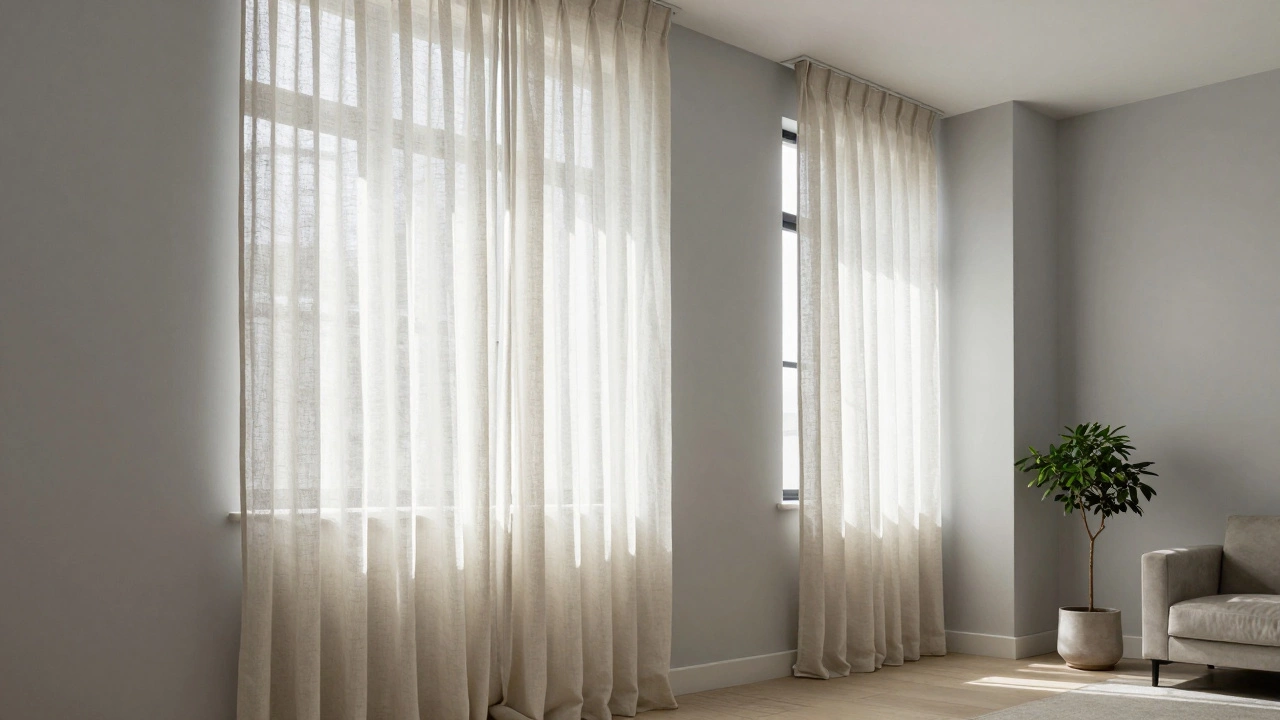Ever pull out a dining chair and end up banging elbows, or worse—squeezing sideways because someone crammed in too many seats? Picking the right number of chairs is more important than you think. It’s not just about ‘filling the space’—it’s about eating, chatting, and moving around without friction.
Here’s one thing most people forget: the size and shape of your table are only the starting points. A standard rectangular table that’s 6 feet long usually holds six chairs. But if you want everyone to feel comfortable, or you often host guests, you might need to think differently. An eight-chair setup seems inviting, but only if your room is big enough and your guests aren’t shoulder-to-shoulder.
- The Standard Chair Counts for Popular Table Sizes
- Real-World Room Layouts: What Fits and What Fails
- The Social Side: Hosting vs. Family Life
- Squeezing In: Bench Seating and Folding Options
- Chair Comfort: Armchairs, Side Chairs, and Space Rules
- Tips to Avoid Overcrowding (and Awkward Elbow Wars)
The Standard Chair Counts for Popular Table Sizes
When people talk about dining room chairs, they’re often thinking about those classic lineups everyone sees at furniture stores. But let’s break it down by real numbers and shapes, since one size definitely doesn’t fit all.
Here’s a quick-reference table folks use when buying a dining set:
| Table Shape | Common Table Size | Standard Number of Chairs |
|---|---|---|
| Rectangular | 60-72" long (5-6 feet) | 6 |
| Rectangular | 84-96" long (7-8 feet) | 8 |
| Round | 42-48" diameter | 4 |
| Round | 54-60" diameter | 6 |
| Square | 36-44" | 4 |
| Square | 54"+ | 8 |
If your table is standard-height (about 30 inches tall), most people leave 24 to 30 inches of space per person on the sides. That adds up fast—if your 6-foot table seems like it should squeeze in eight, try it out first. Most folks realize it turns into a shoulder-bumping contest real quick.
Oval tables usually follow the same chair counts as rectangular ones. However, because of those curved edges, you sometimes fit an extra seat in a pinch. But for daily use, stick to the standard counts above for actual comfort.
- Counter-height tables (36” tall) often use stools, but the number per side stays about the same unless you go extra-long.
- If you’re mixing up long benches with chairs, you can usually add one more person per bench—but only if your room lets people move without knocking knees.
One last thing: just because a table comes with eight chairs doesn't mean you have to use them all at once. Add extra only when you’ve got a crowd. Day-to-day, leave a little space so everyone actually enjoys the meal.
Real-World Room Layouts: What Fits and What Fails
Just because your table technically seats eight doesn’t mean your room can handle eight chairs without turning dinnertime into bumper cars. One of the key rules is making sure you’ve got at least 36 inches (about 91 cm) of clearance from the edge of the table to the wall or any furniture. That’s enough for most people to push their chair back without whacking something—or someone.
Let’s talk numbers. Measure your dining room before you buy any new dining room chairs. Check out how standard table sizes play out in real rooms:
| Table Size (Rectangular) | Best # of Chairs | Room Size Needed (min) |
|---|---|---|
| 4' x 2.5' | 4 | 9' x 9' |
| 6' x 3' | 6 | 10' x 13' |
| 8' x 3' | 8 | 13' x 14' |
For round tables, the story shifts a bit. A 48-inch round usually fits 4-6 chairs. But if you try to squeeze 8 around that size, things get tight, fast.
- Tip: Use painter’s tape to mark out your table and chairs on the floor before you buy. Walk around—if you’re shimmying past the tape, you’ll be shimmying past real chairs too.
- If you’ve got a condo or small open floor plan, try benches on one side or mix in a few lightweight chairs that tuck under when not in use. This makes a huge difference for family breakfasts and quick cleanups.
Every family is different, but you don’t want guests feeling like sardines. If your dining area links up with a walkway or is right next to the living room, keep extra space on at least one side so people don’t get blocked in. The most common mistake? Fitting the max seats possible just because you can. It rarely pays off for real-life comfort.
The Social Side: Hosting vs. Family Life
A lot of folks get stuck here: you want your dining room table perfect for family dinners, but also ready for game night or Thanksgiving feasts. Most American families sit between 3 and 6 people at a table during everyday meals. The table seating you pick sets the vibe—cozy for weeknights, or roomy for when the relatives show up with dessert in hand.
Think about how often you actually host. If those big family gatherings only happen once or twice a year, do you really need eight chunky chairs squeezing into your space every day? Common setups are:
- Family of 4: 4-6 chairs around a mid-size table, with two chairs pulled away for breakfasts or homework time.
- Hosts and entertainers: Tables with 6-8 chairs, sometimes using drop leaves or extension inserts for holiday parties.
- Couples in small apartments: Two chairs—maybe four if you entertain, but stored away most of the time.
Here’s some quick math on chair needs vs. social style:
| People in Household | Daily Chairs Needed | Chairs for Guests |
|---|---|---|
| 2 | 2 | 4 |
| 4 | 4 | 6-8 |
| 6 | 6 | 8-10 |
One smart tip: keep a couple folding or stackable chairs in a closet or another room. That way, you’re not tripping over extra seats during your normal routine. Bonus: it’s way easier to get around the table and actually have a conversation.

Squeezing In: Bench Seating and Folding Options
If you’ve ever tried to jam more chairs around your dining table and run out of wiggle room, there’s good news—benches and folding chairs are a total game changer. They help you fit more people without crowding or clutter. This is especially handy for smaller dining rooms or when you need extra spots for guests during holidays or parties.
Let’s get real: with a standard 6-foot rectangular table, you can usually squeeze three folks on a bench where only two chairs would fit. Benches are also easier for kids to use. Plus, when you don’t need extra seating, you can slide a bench under the table and open up the floor. In fact, about 35% of families in the U.S. with small dining spaces use benches to maximize their seating and room flow.
- Benches work best along one or both long sides of a rectangular table.
- If you use folding chairs, pick ones that have a slim profile and are easy to stash in a closet or behind a door.
A big bonus: benches and folding chairs let you skip the classic mismatched chair look, which can make a space feel messy. Just pull the folding chairs out when you need them and hide them when you don’t. Some families keep two or three extra foldables tucked away, just in case a neighbor or cousin pops in for dinner.
| Table Size | Typical Chair Capacity | Max Bench & Folding Seating |
|---|---|---|
| 6 ft Rectangle | 6 | 8 (2 benches + 2 folding) |
| 5 ft Round | 6 | 7-8 (1 bench + 2 folding) |
| 4 ft Square | 4 | 6 (1 bench, 1 folding per side) |
One warning—don’t get too bench-happy. Older folks sometimes struggle with benches and might prefer chairs with backs. Also, always double-check your table height. Standard dining tables are 28-30 inches tall, and benches or folding chairs should have a seat height around 18 inches for comfort.
When you really need flexible seating in a tight space, benches and folding chairs are practical, simple solutions that won’t hurt your dining room chairs game. Just remember: keep it balanced, don’t block pathways, and your dining setup will go from cramped to comfy in no time.
Chair Comfort: Armchairs, Side Chairs, and Space Rules
Pull up a chair—or two, or eight—but which type really works best? Not all dining room chairs are created equal. Armchairs look classy at the ends of the table (called "captain's chairs" in some furniture circles), but they eat up more space. Side chairs, which are just chairs without arms, fit tighter and give you more wiggle room for extra people.
Here's the deal: Average dining chairs need about 24 inches of elbow space per person to keep things cozy, not cramped. If you’ve got armchairs, bump that up to 26-28 inches. Tables that measure 72 inches (6 feet) long do great with either six side chairs or a mix with armchairs on each end, but eight seats get tricky unless the chairs are narrow or you have a wide table.
“Proper spacing helps guests enjoy their meal without bumping into their neighbor or feeling pinned in. It’s one of the most overlooked details in dining room setup,” says interior designer Nate Berkus, as quoted in House Beautiful (Feb 2023).
Getting the height right matters too. Most dining tables are about 30 inches high, and your chair seat should be 17-19 inches from the floor, leaving enough room so legs aren't squished underneath. Watch out if you pick chunky armchairs—they look cool, but can make things feel crowded.
| Type | Min. Width Needed (inches) | Ideal Use |
|---|---|---|
| Side Chair | 24 | Fitting more people at rectangular or round tables |
| Armchair | 26-28 | Comfort at table ends or wide tables |
| Bench | Varies | Flexible seating for kids, small spaces |
If you’re cramming chairs just to "make space," you’re setting yourself up for bumping knees and shuffling seats. It’s smarter to use fewer chairs and maybe add a bench or two for flexibility. Quick tip: always slide the chairs in before guests arrive. If you can easily walk between them, you’re golden. If not, someone’s probably going to spill their wine reaching for the rolls.
Tips to Avoid Overcrowding (and Awkward Elbow Wars)
Nobody wants to feel like a sardine when sitting down for dinner. There’s actually some real science to keeping folks comfy at the dining room chairs table. The golden rule? Every person should get at least 24 inches (61 cm) of space side-to-side, but 30 inches (76 cm) if you want holiday-level comfort. The more room you have, the happier your guests will be.
Here’s what furniture expert Seth Marlow from HomeLife Interiors says:
“Think about the space you need for your elbows, cutlery, and even just to pull in and out of your chair. Overcrowding not only ruins the vibe, but it can also make every meal feel like a balancing act.”
If you’re trying to avoid the classic elbow-war, stick to these practical tips:
- Measure your table from edge to edge. Divide the total length by 24 inches—that’s the max number of chairs you should use.
- If your table is round, use the formula: Circumference ÷ 24. Example: a 60-inch round table can comfortably seat 7-8.
- Give at least 36 inches of walkway space around the table so people don’t get trapped.
- Skip big armchairs if every inch counts. Go for side chairs—they save a ton of space.
- For parties or big gatherings, benches fit more people, but reserve them for the kids or younger crowd.
Want to see what actually works? Take a look at this simple breakdown:
| Table Shape | Table Size | Comfortable Seats | Max Tight Seats |
|---|---|---|---|
| Rectangle | 72 x 36 in (6 ft) | 6 | 8 |
| Round | 60 in diameter | 6 | 8 |
| Square | 48 in | 4 | 8 (with stools) |
One last thing—don’t forget about chair width. Most standard chairs need 18-20 inches of space. If you’re doing a custom setup or mixing different chair styles, double-check the measurements so nobody ends up wedged in awkwardly. When in doubt, set out fewer chairs for daily use and bring in extras only when you need them. Your dinner parties—and your guests—will thank you.





